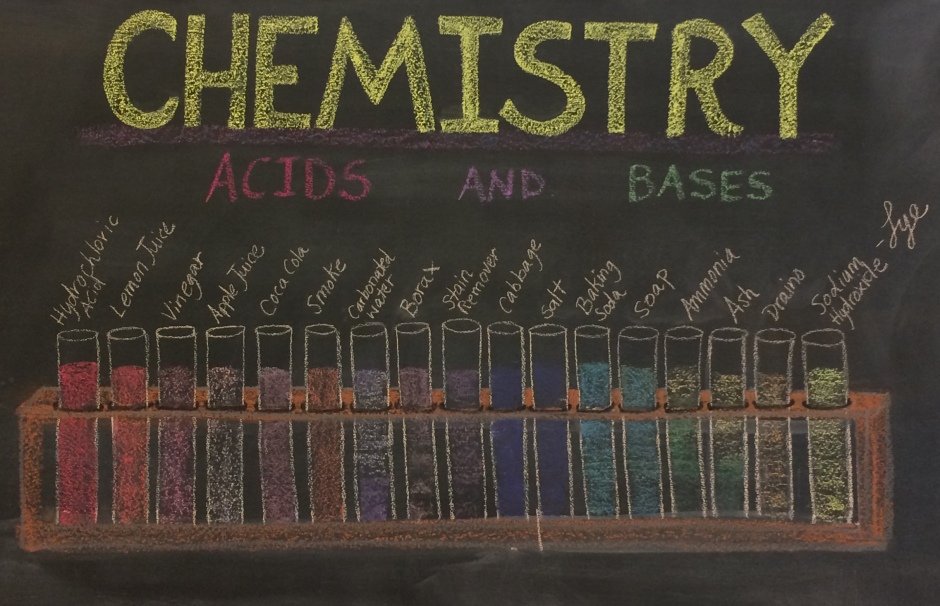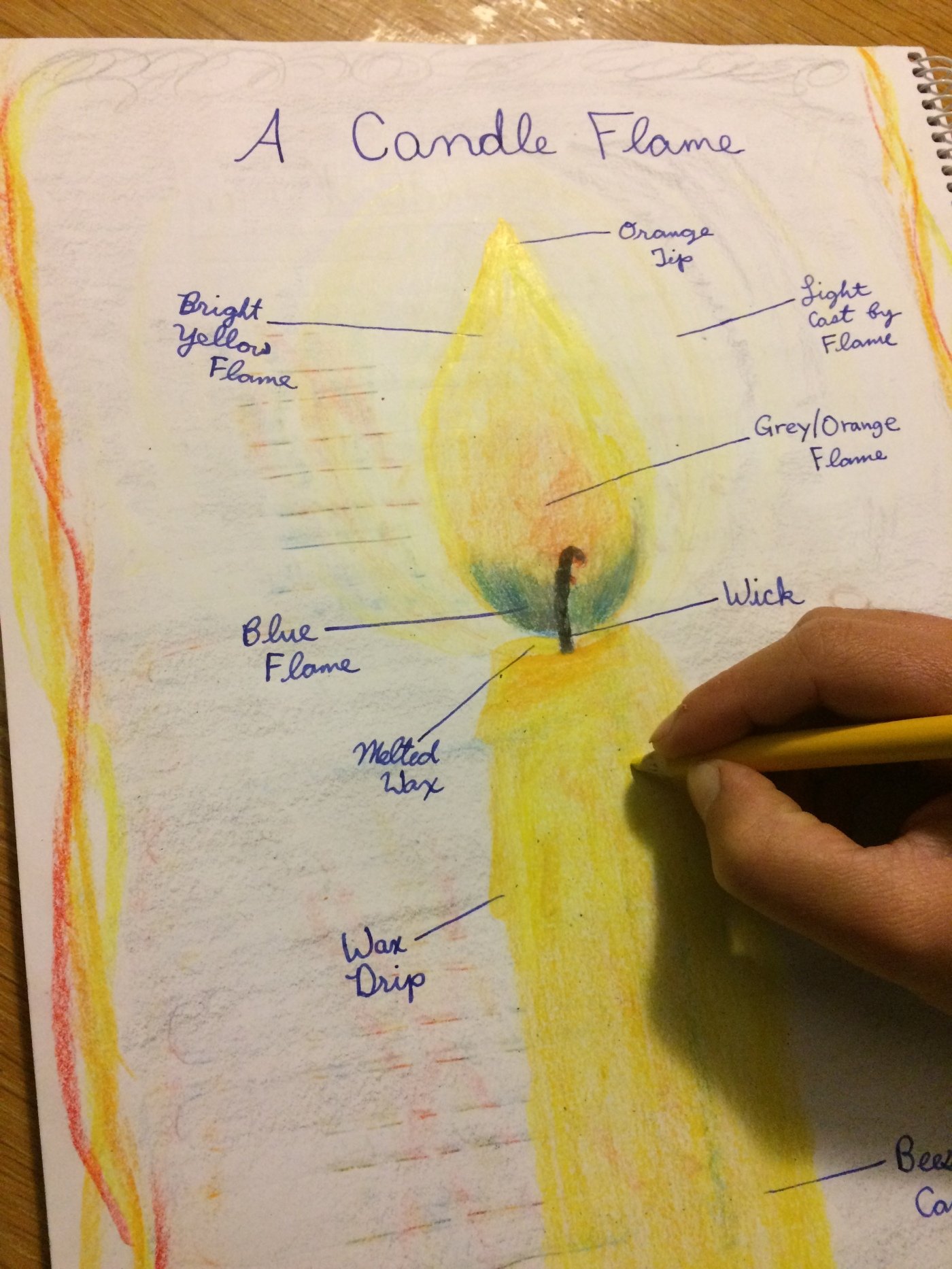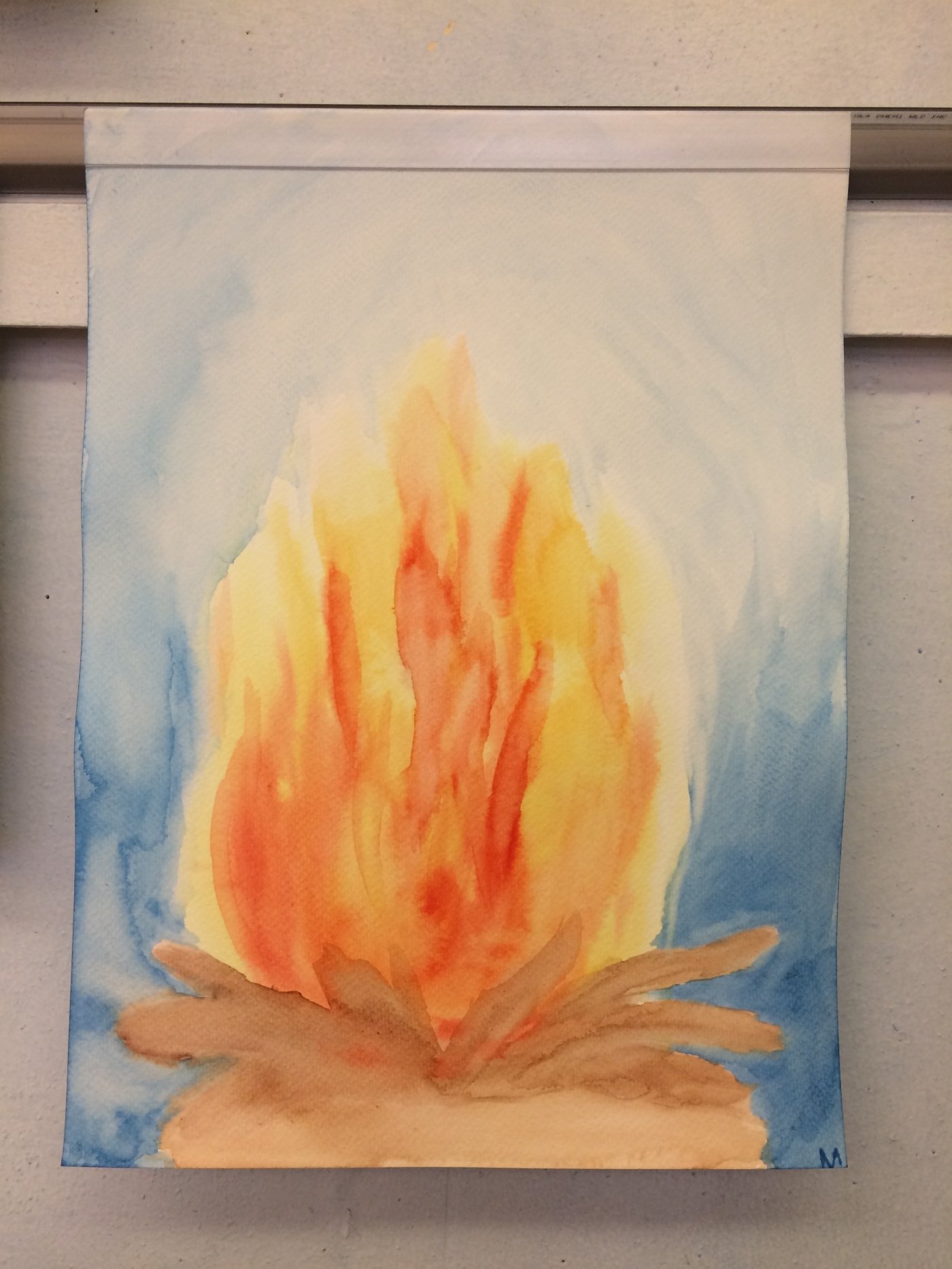Igniting Curiosity in Middle School Science
A spirit of inquiry, experiential learning, and an integration of academic disciplines are cornerstones of our school’s approach to education.
In our middle school classrooms, where 6th, 7th, and 8th graders explore complex topics in chemistry, physics, physiology, biology, and geology, science isn’t presented in concepts and lectures. It begins with observation. Through observation, our students learn to think like scientists, asking questions and posing theories before being given all the answers.
Even art, which is integrated throughout our curriculum, is used as a tool for understanding STEM topics. For example, in their studies of combustion as part of the 7th grade chemistry block, students were asked to observe and then draw a bonfire and a candle. You can see a few examples of our students’ work below.
As a capstone to the study of combustion, teacher Ms. Terziev performed a demonstration for the class, asking them to watch silently and then offer their theories on what they’d observed.
After watching the experiment, students brought their questions and theories to the group, inspiring both curiosity and critical thinking in the classroom. This approach helps students build a meaningful understanding of complex scientific concepts. In Waldorf education, this is called a phenomenological approach to science. In this way, 7th graders at Marin Waldorf School connect and internalize complex topics in chemistry, like combustion, as well as crystallization, acids/bases, and the lime cycle.
The study of science at Marin Waldorf School begins in early childhood, with the simple observation of the seasons and the natural world, and through nature stories. In elementary school, students learn to ask questions and to learn through doing, laying the groundwork for more complex critical thinking that they will need to tackle their studies of chemistry, biology, physiology, geology, and physics in middle school.
This blog post is part of a series from our Grandmother Oak Blog. To read more posts like this one, visit grandmotheroak.org.



